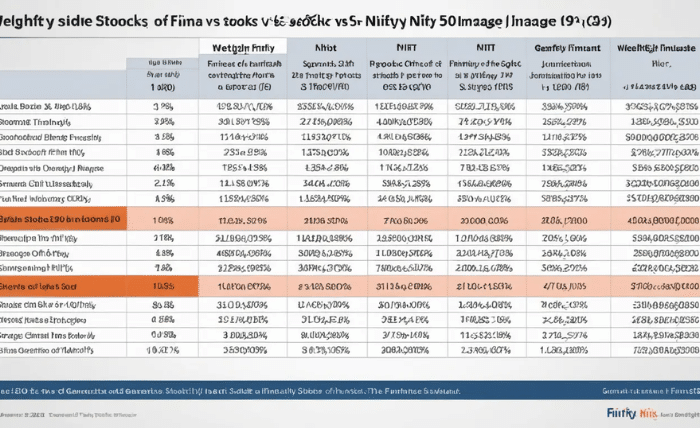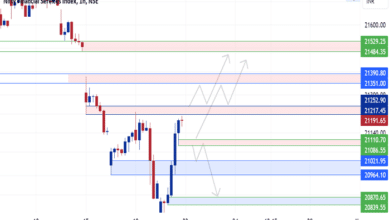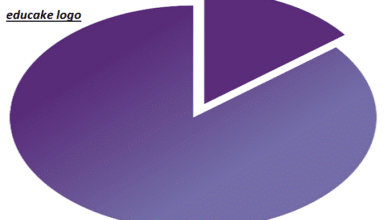Finnifty Weightage: Key Stocks & Insights for 2024

Finnifty is a special index in the stock market that focuses on financial services companies in India. It’s a way to measure how the financial sector is doing. Understanding Finnifty weightage can help investors know which stocks play the biggest role in the index. If you want to invest or just learn more, this guide is for you.
What Is Finnifty Weightage?
Finnifty weightage refers to the percentage contribution of each stock in the Finnifty index. This weightage shows how much a particular stock affects the index’s performance.
For example, if a stock has a high weightage, even small price changes can move the entire index. So, knowing the Finnifty weightage stocks can be useful for tracking market trends.
The Finnifty index includes companies from the financial sector, like banks, insurance firms, and other financial service providers. By understanding the Finnifty stock weightage, you can identify which companies influence the market the most. This is particularly helpful for investors and traders looking to make informed decisions.
Why Is Finnifty Weightage Important?
The Finnifty index is made up of 20 major financial companies. These include banks, insurance firms, and other financial service providers. Understanding the Finnifty stock weightage helps:
- Investors make informed decisions. Knowing which stocks carry the most weight helps investors focus their strategies.
- Traders predict market movement. Traders can use the weightage to understand which stocks are likely to drive the index up or down.
- Analysts track the financial sector’s health. Analysts often look at the Finnifty components weightage to gauge the overall performance of the financial services sector.
If you’re trading options or futures, the weightage becomes even more critical because of its impact on max pain Finnifty, which we’ll discuss later. Understanding these weightages can improve your chances of making profitable trades.
Finnifty Weightage Stocks List 2024
Here is a simplified list of some of the top stocks and their approximate weightage in Finnifty for 2024:
- HDFC Bank – 25%
- ICICI Bank – 20%
- State Bank of India (SBI) – 15%
- Kotak Mahindra Bank – 10%
- Axis Bank – 8%
- Other financial companies make up the remaining weightage.
These companies together form the Finnifty components weightage and drive the overall index. The top five companies alone account for a significant portion of the index, making them the primary drivers of Finnifty’s movement. This shows how concentrated the index is, with major banks holding the highest influence.
A Closer Look at Key Companies
Let’s take a closer look at some of the top companies in Finnifty:
HDFC Bank (Weightage: 25%)
HDFC Bank is India’s largest private-sector bank by market capitalization. Its weightage in Finnifty is the highest, meaning any significant change in its stock price can move the index considerably.
ICICI Bank (Weightage: 20%)
ICICI Bank is another major private-sector bank with a high weightage. It plays a crucial role in determining the Finnifty index’s performance.
State Bank of India (SBI) (Weightage: 15%)
SBI is the largest public-sector bank in India. Its weightage reflects its importance in the Indian financial landscape.
Kotak Mahindra Bank (Weightage: 10%)
Known for its strong focus on retail banking and wealth management, Kotak Mahindra Bank also holds a significant position in Finnifty.
Axis Bank (Weightage: 8%)
Axis Bank is another leading private-sector bank that impacts the index with its weightage.
These companies, along with others, make up the Finnifty constituents weightage, shaping the overall market trends in the financial services sector.
What Is Max Pain in Finnifty?
Max pain Finnifty is a term used in options trading. It refers to the price point where most traders lose the least amount of money. Knowing this can help you understand where the market might settle before an options expiry.
For example, if the max pain is at 18,000 points, the index is likely to stay close to this level as expiry approaches. Combining this with Finnifty companies weightage gives a clearer picture of market behavior. Traders often use max pain analysis to make short-term predictions and plan their strategies.
How Does Finnifty Weightage Impact Investors?
The weightage of stocks in Finnifty directly affects:
- Risk Levels: Stocks with higher weightage have a larger impact. For example, if HDFC Bank sees a major price drop, the whole index might fall.
- Portfolio Planning: Knowing the Finnifty stocks weightage helps in balancing your investments. If you already own stocks with high weightage, you might avoid overexposure.
- Market Trends: By watching the top-performing stocks in Finnifty, you can predict future trends in the financial sector.
Investors who understand the weightage data can better manage their risks and maximize returns. Whether you are a long-term investor or a day trader, Finnifty weightage plays a key role in guiding your decisions.
Finnifty Weightage Stocks vs Nifty 50 Stocks
Many people wonder how Finnifty is different from the Nifty 50. The key difference is focus:
- Finnifty is all about financial services companies. It’s a sector-specific index.
- Nifty 50 includes companies from various sectors like IT, pharma, FMCG, and more.
In Finnifty, the weightage is more concentrated. This means that Finnifty constituents weightage has a bigger impact on the index compared to Nifty 50. For instance, while Nifty 50 diversifies risk across sectors, Finnifty focuses exclusively on the financial sector, making it more sensitive to changes in banking and finance stocks.
Finnifty Weightage Stocks List 2023 vs 2024
While the core stocks in Finnifty don’t change often, the weightage percentages can shift slightly each year. For example:

- HDFC Bank had a weightage of 26% in 2023 but now holds 25% in 2024.
- ICICI Bank also saw a minor adjustment in its weightage.
- New regulations or mergers might also affect the list.
Keeping an eye on the Finnifty weightage stocks list 2024 ensures that you’re up to date with the latest trends. Investors should regularly check updates from reliable sources like the NSE to stay informed about any changes in the index.
How to Use Finnifty Weightage Data
Here are some practical tips:
- For Long-Term Investment: Focus on stocks with high weightage as they are usually well-established. Stocks like HDFC Bank and ICICI Bank are relatively stable and can provide consistent returns over time.
- For Trading: Use weightage data with tools like max pain Finnifty to predict short-term movements. Traders can combine this information with technical analysis for better results.
- For Diversification: Balance your portfolio by including stocks from other sectors too. While Finnifty provides a good exposure to financial services, diversifying into other sectors reduces risk.
By using this data wisely, you can align your investment strategy with the market’s behavior, ensuring better outcomes for both short-term and long-term goals.
The Role of Finnifty Components Weightage in Market Trends
The Finnifty components weightage provides insights into how different financial companies contribute to the overall index. Analysts often use this data to:
- Predict the impact of major financial events.
- Study the effect of policy changes on the financial sector.
- Track the performance of specific companies within the index.
For instance, if the Reserve Bank of India announces a change in interest rates, stocks with higher weightage like HDFC Bank and ICICI Bank are likely to react first. This, in turn, will impact the Finnifty index.
Conclusion: Why You Should Care About Finnifty Weightage
Whether you’re an investor or trader, understanding Finnifty weightage is essential for making smarter decisions. By focusing on the top stocks and their weightage, you can:
- Stay ahead of market trends.
- Plan your investments better.
- Minimize risks in options trading.
Keeping track of the Finnifty weightage stocks list 2024 and related data ensures you stay informed about the market’s pulse. With the financial sector playing a vital role in India’s economy, Finnifty offers a focused view of this critical area.





